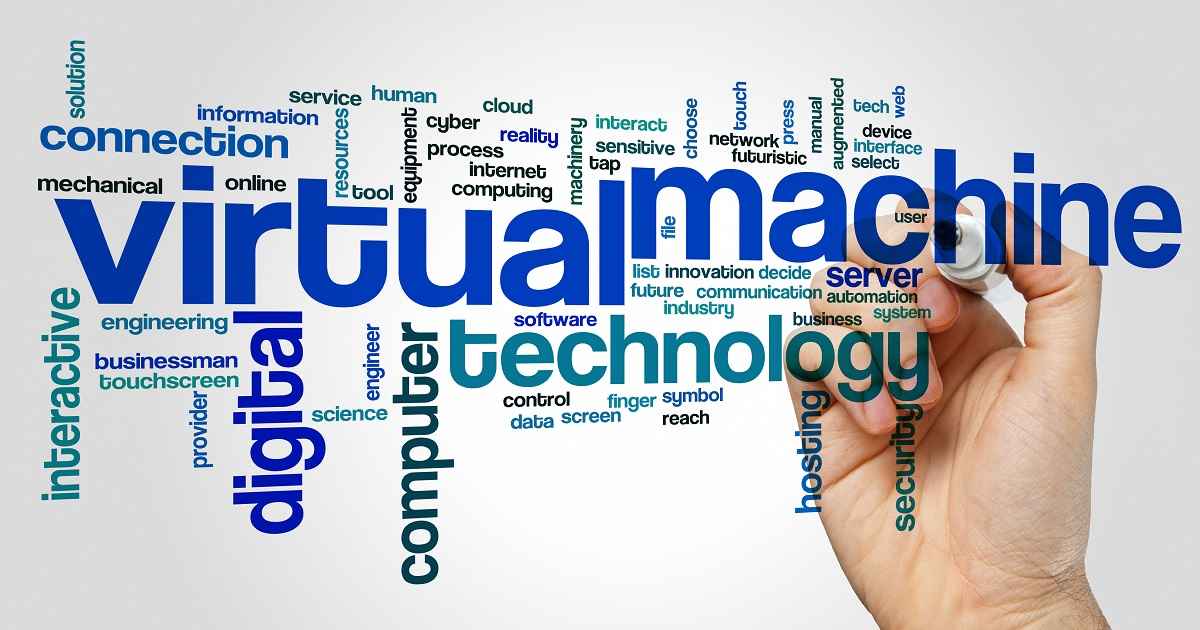
Virtual Desktop Tools
Article | August 12, 2022
Although remote working or working from home became popular during the COVID era, did you know that the technology that gives the best user experience (UX) for remote work was developed more than three decades ago?
Citrix was founded in 1989 as one of the first software businesses to provide the ability to execute any program on any device over any connection. In 2006, VMware coined the term "virtual desktop infrastructure (VDI)" to designate their virtualization products.
Many organizations created remote work arrangements in response to the COVID-19 pandemic, and the phenomenon will continue even in 2022. Organizations have used a variety of methods to facilitate remote work over the years. For businesses, VDI has been one of the most effective, allowing businesses to centralize their IT resources and give users remote access to a consolidated pool of computing capacity.
Reasons Why Businesses Should Use VDI for their Remote Employees?
Companies can find it difficult to scale their operations and grow while operating remotely. VDI, on the other hand, can assist in enhancing these efforts by eliminating some of the downsides of remote work.
Device Agnostic
As long as employees have sufficient internet connectivity, virtual desktops can accompany them across the world. They can use a tablet, phone, laptop, client side, or Mac to access the virtual desktop.
Reduced Support Costs
Since VDI setups can often be handled by a smaller IT workforce than traditional PC settings, support expenses automatically go down.
Enhanced Security
Data security is raised since data never leaves the datacenter. There's no need to be concerned about every hard disk in every computer containing sensitive data. Nothing is stored on the end machine while using the VDI workspace. It also safeguards intellectual property while dealing with contractors, partners, or a worldwide workforce.
Comply with Regulations
With virtual desktops, organizational data never leaves the data center. Remote employees that have regulatory duties to preserve client/patient data like function because there is no risk of data leaking out from a lost or stolen laptop or retired PC.
Enhanced User Experience
With a solid user experience (UX), employees can work from anywhere. They can connect to all of their business applications and tools from anywhere they want to call your workplace, exactly like sitting at their office desk, and even answer the phone if they really want to.
Closing Lines
One of COVID-19's lessons has been to be prepared for almost anything. IT leaders were probably not planning their investments with a pandemic in mind.
Irrespective of how the pandemic plays out in the future, the rise of remote work is here to stay. If VDI at scale is to become a permanent feature of business IT strategies, now is the moment to assess where, when, and how your organization can implement the appropriate solutions. Moreover, businesses that use VDI could find that the added flexibility extends their computing refresh cycles.
Read More

VMware, Vsphere, Hyper-V
Article | May 2, 2023
The emergence of the notion of virtualization in today's digital world has turned the tables. It has assisted the sector in increasing production and making every activity easy and effective. One of the most remarkable innovations is the virtualization of applications, which allows users to access and utilize applications even if they are not installed on the system on which they are working. As a result, the cost of obtaining software and installing it on specific devices is reduced.
Application virtualization is a technique that separates an application from the operating system on which it runs. It provides access to a program without requiring it to be installed on the target device.
The program functions and interacts with the user as if it were native to the device. The program window can be resized, moved, or minimized, and the user can utilize normal keyboard and mouse movements. There might be minor differences from time to time, but the user gets a seamless experience.
Let’s have a look at the ways in which application virtualization helps businesses.
The Impact of Application Virtualization
• Remote-Safe Approach
Application virtualization enables remote access to essential programs from any end device in a safe and secure manner. With remote work culture developing as an increasingly successful global work paradigm, the majority of businesses have adapted to remote work-from-home practice.
This state-of-the-art technology is the best option for remote working environments because it combines security and convenience of access.
• Expenditure Limitations
If you have a large end-user base that is always growing, acquiring and operating separate expensive devices for each individual user would definitely exhaust your budget.
In such situations, virtualization will undoubtedly come in handy because it has the potential to offer all necessary applications to any target device.
• Rolling Out Cloud Applications
Application virtualization can aid in the development and execution of a sophisticated and controlled strategy to manage and assure a seamless cloud transition of an application that is presently used as an on-premise version in portions of the same enterprise. In such cases, it is vital to guarantee that the application continues to work properly while being rolled out to cloud locations.
You can assure maximum continuity and little impact on your end customers by adopting a cutting-edge virtualization platform. These platforms will help to ensure that both the on-premise and cloud versions of the application are delivered smoothly to diverse groups sitting inside the same workspace.
• Implementation of In-House Applications
Another prominent case in which virtualization might be beneficial is the deployment and execution of in-house applications. Developers often update such programs on a regular basis. Application virtualization enables extensive remote updates, installation, and distribution of critical software. As a result, this technology is crucial for enterprises that build and employ in-house applications.
Closing Lines
There is no doubt about the efficiency and advantages of application virtualization. You do not need to be concerned with installing the programs on your system. Moreover, you do not need to maintain the minimum requirements for running such programs since they will operate on the hosted server, giving you the impression that the application is operating on your system. There will be no performance concerns when the program runs. There will not be any overload on your system, and you will not encounter any compatibility issues as a result of your system's underlying operating system.
Read More

Server Hypervisors
Article | September 9, 2022
Danny Cobb, fellow and vice president of engineering for Dell Technologies’ telco systems business, remembers his company cruising into early 2020: Kicking off a new fiscal year with its operating plan in place, supply chain nailed down and factories humming; people coming into the office each day to the usual routine of looking for parking spots and taking laptops down to the cafeteria.
Then came March, and the first wave of the Covid-19 pandemic hit U.S. shores. In the course of one weekend, Dell pivoted to having more than 90% of its workforce working from home. That meant a dramatic shift in its network needs and operations – one that was only able to be accomplished so quickly because of virtualized infrastructure.
Read More

Virtual Desktop Strategies, Server Hypervisors
Article | April 27, 2023
Contents
1. Introduction
2. What is Orchestration?
3. How Orchestrating Help Optimize VMs Efficiency?
3.1. Resource Optimization
3.2 Dynamic Scaling
3.3 Faster Deployment
3.4 Improved Security
3.5 Multi-Cloud Management
3.6 Improved Collaboration
4. Considerations while Orchestrating VMs
4.1. Together Hosting of Containers and VMs
4.2 Automated Backup and Restore for VMs
4.3 Ensure Replication for VMs
4.4 Setup Data Synchronization for VMs
5. Conclusion
1. Introduction
Orchestration is a superset of automation. Cloud orchestration goes beyond automation, providing coordination between multiple automated activities. Cloud orchestration is increasingly essential due to the growth of containerization, which facilitates scaling applications across clouds, both public and private.
The demand for both public cloud orchestration and hybrid cloud orchestration has increased as businesses increasingly adopt a hybrid cloud architecture. The quick adoption of containerized, micro-services-based apps that communicate over APIs has fueled the desire for automation in deploying and managing applications across the cloud. This increase in complexity has created a need for VM orchestration that can manage numerous dependencies across various clouds with policy-driven security and management capabilities.
2. What is Orchestration?
Orchestration refers to the process of automating, coordinating, and managing complex systems, workflows, or processes. It typically entails the use of automation tools and platforms to streamline and coordinate the deployment, configuration, management of applications and services across different environments. This includes development, testing, staging, and production.
Orchestration tools in cloud computing can be used to automate the deployment and administration of containerized applications across multiple servers or clusters. These tools can help automate tasks such as container provisioning, scaling, load balancing, and health monitoring, making it easier to manage complex application environments. Orchestration ensures organizations automate and streamline their workflows, reduce errors and downtime, and improve the efficacy and scalability of their operations.
3. How Orchestrating Help Optimize VMs Efficiency?
Orchestration offers enhanced visibility into the resources and processes in use, which helps prevent VM sprawl and helps organizations trace resource usage by department, business unit, or individual user.
Fig. Global Market for VNFO by Virtualization Methodology 2022-27($ million)
(Source: Insight Research)
The above figure shows, VMs have established a solid legacy that will continue to be relevant in the near to mid-term future.
These are 6 ways, in which Orchestration helps vin efficient management of VMs:
3.1. Resource Optimization
Orchestrating helps optimize resource utilization by automating the provisioning and de-provisioning of VMs, which allows for efficient use of computing resources. By using orchestration tools, IT teams can set up rules and policies for automatically scaling VMs based on criteria such as CPU utilization, memory usage, network traffic, and application performance metrics. Orchestration also enables advanced techniques such as predictive analytics, machine learning, and artificial intelligence to optimize resource utilization. These technologies can analyze historical data and identify patterns in workload demand, allowing the orchestration system to predict future resource needs and automatically provision or de-provision resources accordingly
3.2. Dynamic Scaling
Orchestrating helps automate scaling of VMs, enabling organizations to quickly and easily adjust their computing resources based on demand. It enables IT teams to configure scaling policies and regulations for virtual machines based on resource utilization and network traffic along with performance metrics. When the workload demand exceeds a certain threshold, the orchestration system can autonomously provision additional virtual machines to accommodate the increased load. When workload demand decreases, the orchestration system can deprovision VMs to free up resources and reduce costs.
3.3. Faster Deployment
Orchestrating can help automate VM deployment of VMs, reducing the time and effort required to provision new resources. By leveraging advanced technologies such as automation, scripting, and APIs, orchestration can further streamline the VM deployment process. It allows IT teams to define workflows and processes that can be automated using scripts, reducing the time and effort required to deploy new resources. In addition, orchestration can integrate with other IT management tools and platforms, such as cloud management platforms, configuration management tools, and monitoring systems. This enables IT teams to leverage various capabilities and services to streamline the VM deployment and improve efficiency.
3.4. Improved Security
Orchestrating can help enhance the security of VMs by automating the deployment of security patches and updates. It also helps ensure VMs are deployed with the appropriate security configurations and settings, reducing the risk of misconfiguration and vulnerability. It enables IT teams to define standard security templates and configurations for VMs, which can be automatically applied during deployment. Furthermore, orchestration can integrate with other security tools and platforms, such as intrusion detection systems and firewalls, to provide a comprehensive security solution. It allows IT teams to automate the deployment of security policies and rules, ensuring that workloads remain protected against various security threats.
3.5. Multi-Cloud Management
Orchestration helps provide a single pane of glass for VM management, enabling IT teams to monitor and manage VMs across multiple cloud environments from a single platform. This simplifies management and reduces complexity, enabling IT teams to respond more quickly and effectively to changing business requirements. In addition, orchestration also helps to ensure consistency and compliance across multiple cloud environments. Moreover, orchestration can also integrate with other multi-cloud management tools and platforms, such as cloud brokers and cloud management platforms, to provide a comprehensive solution for managing VMs across multiple clouds.
3.6. Improved Collaboration
Orchestration helps streamline collaboration by providing a centralized repository for storing and sharing information related to VMs. Moreover, it also automates many of the routine tasks associated with VM management, reducing the workload for IT teams and freeing up time for more complex tasks. This can improve collaboration by enabling IT teams to focus on more strategic initiatives. In addition, orchestration provides advanced analytics and reporting capabilities, enabling IT teams to track performance, identify bottlenecks, and optimize resource utilization. This improves performance by providing a data-driven approach to VM management and allowing IT teams to work collaboratively to identify and address performance issues.
4. Considerations while Orchestrating VMs
4.1. Together Hosting of Containers and VMs
Containers and virtual machines exist together within a single infrastructure and are managed by the same platform. This allows for hosting various projects using a unified management point and the ability to adapt gradually based on current needs and opportunities. This provides greater flexibility for teams to host and administer applications using cutting-edge technologies and established standards and methods.
Moreover, as there is no need to invest in distinct physical servers for virtual machines (VMs) and containers, this approach can be a great way to maximize infrastructure utilization, resulting in lower TCO and higher ROI. In addition, unified management drastically simplifies processes, requiring fewer human resources and less time.
4.2. Automated Backup and Restore for VMs
--Minimize downtime and reduce risk of data loss
Organizations should set up automated backup and restore processes for virtual machines, ensuring critical data and applications are protected during a disaster. This involves scheduling regular backups of virtual machines to a secondary location or cloud storage and setting up automated restore processes to recover virtual machines during an outage or disaster quickly.
4.3. Ensure Replication for VMs
--Ensure data and applications are available and accessible in the event of a disaster
Organizations should set up replication processes for their VMs, allowing them to be automatically copied to a secondary location or cloud infrastructure. This ensures that critical applications and data are available even during a catastrophic failure at the primary site.
4.4. Setup Data Synchronization for VMs
--Improve overall resilience and availability of the system
VM orchestration tools should be used to set up data synchronization processes between virtual machines, ensuring that data is consistent and up-to-date across multiple locations. This is particularly important in scenarios where data needs to be accessed quickly from various locations, such as in distributed environments.
5. Conclusion
Orchestration provides disaster recovery and business continuity, automatic scalability of distributed systems, and inter-service configuration. Cloud orchestration is becoming significant due to the advent of containerization, which permits scaling applications across clouds, both public and private.
We expect continued growth and innovation in the field of VM orchestration, with new technologies and tools emerging to support more efficient and effective management of virtual machines in distributed environments. In addition, as organizations increasingly rely on cloud-based infrastructures and distributed systems, VM orchestration will continue to play a vital role in enabling businesses to operate smoothly and recover quickly from disruptions.
VM orchestration will remain a critical component of disaster recovery and high availability strategies for years as organizations continue relying on virtualization technologies to power their operations and drive innovation.
Read More